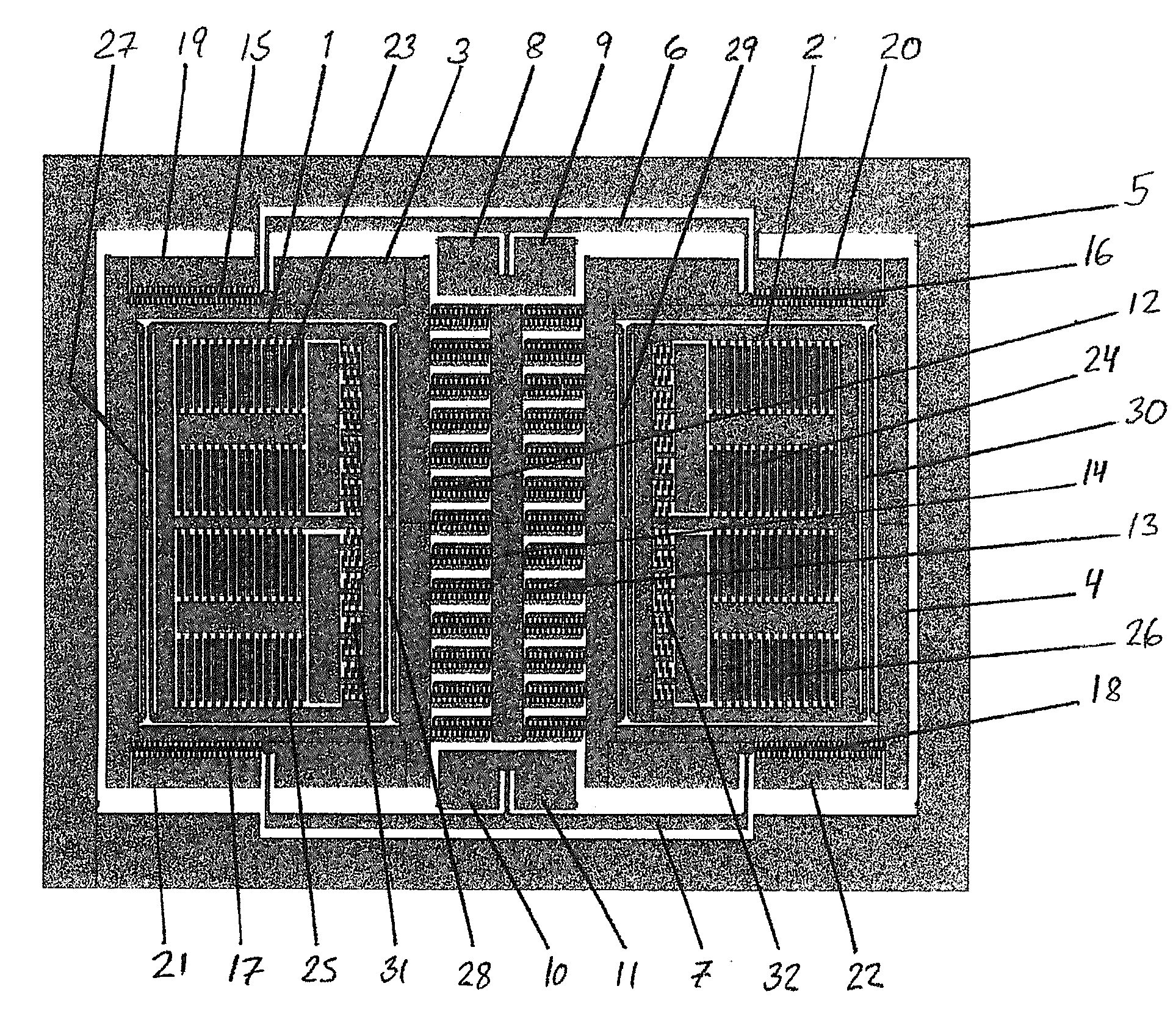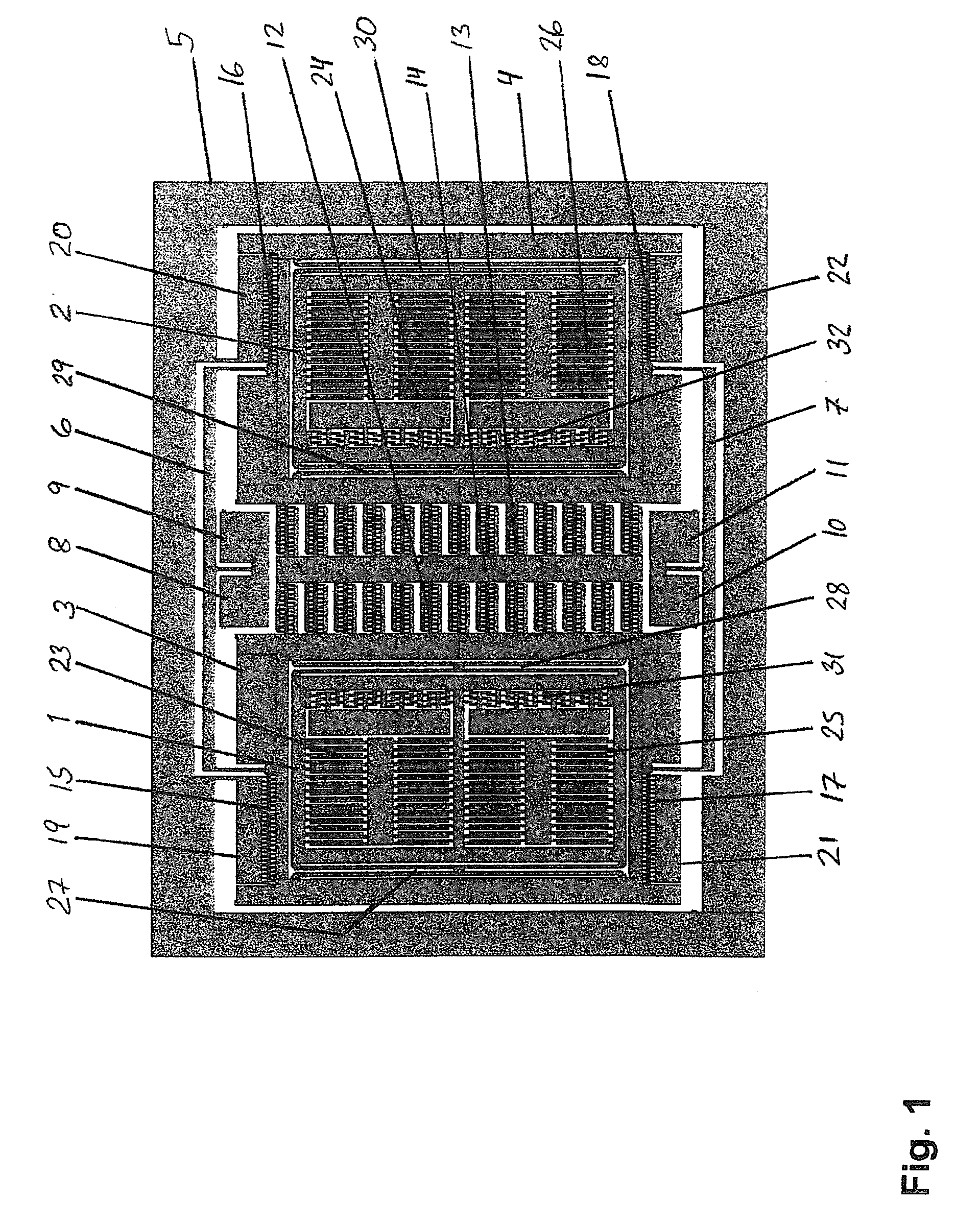Vibrating micro-mechanical sensor of angular velocity
a micro-mechanical sensor and angular velocity technology, applied in the direction of acceleration measurement using interia force, turn-sensitive devices, instruments, etc., can solve the problems of disturbance of the motion of the detection resonator, angular vibration to be detected is susceptible to external mechanical interference, and the requirements are extremely tigh
- Summary
- Abstract
- Description
- Claims
- Application Information
AI Technical Summary
Benefits of technology
Problems solved by technology
Method used
Image
Examples
Embodiment Construction
[0029]FIG. 1 shows a diagram of the functional structure of a vibrating micro-mechanical sensor of angular velocity according to the invention. The depicted vibrating micro-mechanical sensor of angular velocity according to the invention comprises two mass structures 1, 2 positioned apart, which mass structures 1, 2 are supported to excitation structures 3, 4 by means of springs 27-30. Said excitation structures 3, 4 are supported by means of coupling seesaw type springs 6, 7 to anchoring points 8-11 of a frame 5 bordering the sensor.
[0030]The vibrating micro-mechanical sensor of angular velocity according to the invention further comprises capacitive comb structures 23-26 supported to the seismic masses 1, 2, and excitation comb structures 12, 13 connected to the excitation structures 3, 4. Said excitation comb structures 12, 13 are positioned between the excitation structures 3, 4 comprising the mass structures 1, 2, and said excitation comb structures 12, 13 are supported to a ce...
PUM
 Login to View More
Login to View More Abstract
Description
Claims
Application Information
 Login to View More
Login to View More - R&D
- Intellectual Property
- Life Sciences
- Materials
- Tech Scout
- Unparalleled Data Quality
- Higher Quality Content
- 60% Fewer Hallucinations
Browse by: Latest US Patents, China's latest patents, Technical Efficacy Thesaurus, Application Domain, Technology Topic, Popular Technical Reports.
© 2025 PatSnap. All rights reserved.Legal|Privacy policy|Modern Slavery Act Transparency Statement|Sitemap|About US| Contact US: help@patsnap.com



